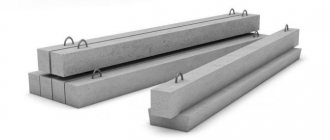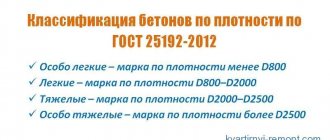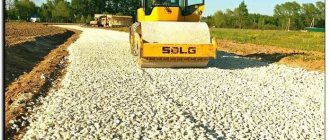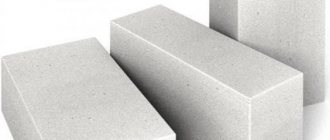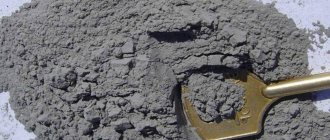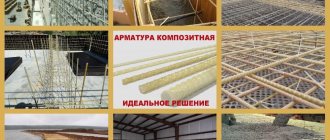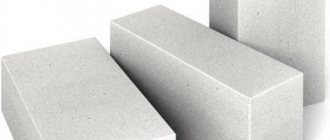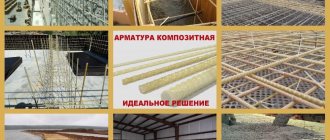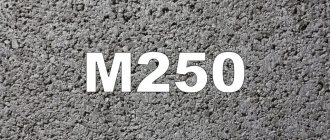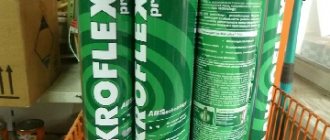Foam chips are polymerized balls, the diameter of which varies between 3-7 millimeters. Crushed material (this is also called this material) is obtained by crushing foam plastic waste. This is economically beneficial, and the original properties of the foam remain the same. So, today we will find out what foam chips can be used for.
Granulated polystyrene foam granules description, characteristics, price
The rapid development of technology in the chemical industry over the past 3 decades has created conditions for the emergence of many new materials based on various polymers.
The most famous and in demand of them, without a doubt, can be called polystyrene foam granules. They are made from a gas-filled mixture, the main ingredient of which is polystyrene. Polymonochlorostyrene or polydichlorostyrene are sometimes used. Antiprenes, fillers, and plasticizers are also added to the composition. Foaming of these components occurs under the influence of low-boiling carbons or gas-forming agents. The foam obtained in this way is a moisture-resistant white granule.
Types, application
The products are as follows:
1. Primary. Foaming of polystyrene granules leads to the fact that when heated by steam, liquid or air, they significantly increase in size and transform into voluminous round-shaped balls.
2. Secondary (crushed) granules are the result of crushing waste obtained in the process of manufacturing foam products in special crushers. The shape of such balls is disrupted and only 2/3 of them are round; the remaining number, as a rule, has “chopped” or “broken” edges. However, this does not affect the properties, which remain the same as those of the primary ones.
The size of foam granules can vary from 1 to 8 mm. Based on this, the following types of polystyrene foam chips are distinguished:
- M-15.
- M-25 Light.
- M-25.
- M–25M.
- M-35 Light.
- M-35.
- M-50 Light.
- M-50.
Characteristics, cost
The above types of granules differ not only in size, but also in parameters, and also have different prices:
| Indicators | Granule type | |||||||
| M-15 | M-25 Light | M-25 | M-25M | M-35 Light | M-35 | M-50 Light | M-50 | |
| Diameter, mm | 8-6 | 6-4 | 4-3 | 2-1 | 4-2 | 1,5-1 | 1-0,5 | |
| Bulk density, kg/m3 | 9 | 9-11 | 12-13 | 14-16 | 18-19 | 20-21 | 26-28 | 30 |
| Heat conductivity coefficient, W/m K | 0,053 | 0,050 | 0,046 | 0,040 | 0,041 | 0,039 | 0,037 | 0,036 |
| Compressive strength, MPa | 0,004 | 0,007 | 0,014 | 0,015 | 0,018 | 0,023 | 0,024 | 0,025 |
| Cost, rub/m3* | 1150 – 1750 | 1 880 | 1 960 | 2130 – 2270 | 2 490 | 3 080 | 3 870 | 4 080 |
*As a rule, sellers pack the balls in bags with a volume of 0.1 to 1 m3. It should also be noted that the price of foam balls for wholesale purchases of 3 m3 or more can be reduced by 10-15%.
Application
Considering the above parameters of granulated polystyrene foam, the scope of its use is very wide. It is in demand:
- As a filler for furniture, bedding accessories and children's toys.
- As the main component for the production of heat-insulating building mixtures, mortars and polystyrene concrete.
- When backfilling the enclosing elements of building structures in the form of heat and sound insulation.
- As a filter for wastewater treatment plants.
- For agricultural work. Foam chips mixed with soil loosens it and saturates it with oxygen, thereby increasing soil fertility.
- It is used for catching river, lake and sea fish as bait.
- You can also buy granulated polystyrene foam for decorative purposes. For example, for making artificial snow and so on.
Advantages and disadvantages
Strengths include:
- Excellent heat and sound insulation qualities.
- Good strength.
- Low moisture absorption coefficient.
- Excellent vapor permeability.
- Frost resistance.
- Resistant to combustion. Due to the introduction of fire-fighting additives into the composition of foam balls, they belong to the category of low-flammable substances G1.
- Environmental safety.
- Durability. For 50 years, performance remains unchanged.
Disadvantages of polystyrene foam chips:
- Instability to chemical solvents.
- When used in open areas, it requires additional protection from sunlight, which is a source of ultraviolet radiation.
Crushed polystyrene foam insulation
Bored foundations with grillage technical characteristics and scope of application
The popularity of insulation in the form of mats or slabs is understandable - they are easy to transport, convenient to work with, while saving time. But often builders use another type of thermal insulation - backfill. It differs from slabs in its structure... It is free-flowing...
Loose-fill thermal insulation is used when it is technically very difficult or completely impossible to install mats or slabs. For example, when an old building is already lined with bricks, but the partition is not insulated. Or the old facade, lined with fresh brick, is so curved that insulating it in the classical way will cause a lot of trouble. Another undeniable advantage of bulk thermal insulation is the inability for rodents to form a nest in it, because it will constantly crumble. You can give a bunch of other examples of the lack of alternatives to fill-in thermal insulation...
We produce bulk thermal insulation based on expanded polystyrene (foam). It consists of granules or agglomerates of granules no larger than 8x8 millimeters in size, obtained by crushing foam plastic slabs. Crushed foam has very high thermal insulation properties and does not absorb moisture.
Crushed polystyrene foam is used to insulate walls, attics, and floors. Cement screeds are made by mixing cement mortar with crushed powder.
Foam chips how to use
Slaked lime characteristics and scope of application
Home » Materials
Foam chips are polymerized balls, the diameter of which varies between 3-7 millimeters. Crushed material (this is also called this material) is obtained by crushing foam plastic waste. This is economically beneficial, and the original properties of the foam remain the same. So, today we will find out what foam chips can be used for.
Foam chips - how to use?
The material is widely used in construction and repair, as well as in the industrial sector, mainly as a heat insulator or building material. Using foam chips is an extremely beneficial method of insulating foundations, walls and floors. Let's find out what the basic principles of using crushed wood are.
- Filler. The material is poured into cavities and holes in ceilings or brickwork, and is also used to level surfaces. Excellent technical properties allow foam granules to take on any shape, so the so-called cold bridges are completely eliminated. Moreover, due to its strength, the material does not deform, which cannot be said, for example, about mineral wool or expanded clay. By the way, you can find more about polystyrene foam crumbs on the website https://dnplast.dp.ua/catalog/granula_i_kroshka_penopolistirola/. But let's get back to use.
- Floor screed. Here we are talking about expanded polystyrene concrete, the preparation process of which consists of several stages. So, first, water is mixed with cement until a homogeneous mass is obtained, then, while continuing to mix, crushed powder is added (the proportions depend on the desired result). The more granules, the better the thermal insulation properties will be, but the lower the density will be. This should not be forgotten.
To obtain a floor screed solution, we recommend adhering to the following proportions:
- 4 or 5 parts crushed;
- 1 part water;
- 2 parts sand;
- 1 part cement.
Where else is crushed wood used?
Among other things, the material is also used in the following situations.
- For fishing wobblers. Finnish fishermen, for example, attach crumbs to a hook and use it as bait.
- For decorating gardens and parks. It is rarely used, but interestingly, the crumbs even allow you to imitate snowdrifts!
So now you know how foam chips are used. That's all, good luck with your work!
Application area
Polystyrene concrete - a mixture of foam chips and cement for floor screed
Granulated polystyrene foam is used in a variety of areas:
- Thermal insulation - most often granules are poured into the cavities between the walls. They are also used to insulate foundations, floors, and attics.
- When producing expanded polystyrene concrete, foam chips are added to the concrete solution. This material retains heat better.
- During the construction of pontoons, the cavities are filled with polystyrene chips.
- In wastewater treatment plants, granules act as an absorbent and purify liquids.
- The particles are used as a filler for frame and frameless furniture.
- The material is also used in the field of design. Artificial snow is made from crumbs.
Varieties
Penoplex with a density of 35 characteristics and scope of application
There are two main subtypes of it: primary and repeated. Initially, polystyrene granules are heated using:
- liquids;
- water vapor;
- air.
In this case, the size increases and the flat structure is transformed into round balls. In the second option, the starting point is passing waste foam products through crushers. It is not always possible to achieve such an even and comfortable external shape. About a third of all secondary production is far from the circle. But this does not create any problems in purely practical terms. The size of the crumb ranges from 0.1 to 0.8 cm.
Manufacturers designate this with various indices. The smallest polystyrene foam has a classification of M-15, and the largest fraction is indicated by the marking M-50. Transitional sizes (for example, M-35 “Light”). Depending on the size, the practical properties of the material change, and its total cost is adjusted.
The following parameters are of decisive importance when choosing:
- bulk density;
- compressive strength;
- level of thermal conductivity.
Release forms
The initial raw material is polystyrene, which has a low density, around 1060 kg/cu m. However, the foamed version has an even lower density, so it is used mainly for insulation. They offer it in 2 forms.
In bulk form
Forms of production of expanded polystyrene - in granules and slabs
By treating the polymer with gas and a blowing agent, spherical particles with a very low density are obtained. The granules are cooled and dried, and then packed into bags. Particles are divided into fractions based on size. Different purposes require granules of different diameters.
In molded products
It is based on the same polystyrene in round granules. The finished particles are not dried, but transferred to a mold, where under the influence of temperature or temperature and pressure they are sintered, forming a single whole. The cellular structure is preserved.
This option is more convenient for external thermal insulation. You can also cut complex shapes from slabs to insulate any structures.
Leveling the ceiling using warm plaster based on polystyrene foam chips
Leveling the ceiling by applying thick layers of plaster is not always justified: it will require attaching a reinforcing mesh, and if there is a significant difference in the ceiling level, the layer will not withstand it and will collapse. Adding polystyrene foam beads to the plaster will help you in this case, as well as when repairing walls, masonry in a well, joints of external panels of a house and internal floor slabs, attics, roofs and floors. When combining polystyrene foam balls with cement-sand or concrete mortar, the finished mixture perfectly retains heat indoors.
To work with the ceiling, we will need the same tools as for regular plastering and at least two plastic buckets.
After cleaning the ceiling from old layers, carefully prime the ceiling using a “fur” roller. The Betonokontakt primer is suitable for concrete slabs. Prepare complex and hard-to-reach areas of the ceiling several times with a brush.
The drying time of the primer is indicated on the packaging - different manufacturers have different times from 3 to 8 hours. Experienced craftsmen never adhere to recommendations for hardening, but try the surface by touch. If the ceiling is still damp, then you should wait, otherwise leveling the ceiling will be in vain - the further layer will collapse in a few weeks.
Polymer plaster mortar is prepared from Styrobond glue in a 1:1 ratio to M400 cement in a bucket. Mix everything with a drill and a mixing attachment until the mixture is homogeneous, gradually adding water until it becomes “sour cream” thick. If the mixture seems too thick, you can add a little water to it.
Now we add polystyrene foam, and you have 2 options: use ready-made crumbs, which are sold in construction stores by weight, or take a regular foam board and crumble it over a bucket. Fill a separate clean bucket 75% full, then add half of the glue solution you just prepared from the first bucket. The proportion of crumb solution will be somewhere around 1:2.5. Mix the mixture until all polystyrene foam granules turn dark.
If your screed (cement + sand) is too high, then it is better to avoid unnecessary overloading of the floor slabs and use a lighter material - expanded polystyrene concrete. Its composition is simple: cement not lower than M400, polystyrene foam balls and foaming agent “Saponified wood resin” (SDO). Leveling the ceiling with expanded polystyrene concrete makes the layer not only light and warm, but also not subject to shrinkage and cracks.
| Description | Advantages | Flaws |
| “Encapsulation” when it is necessary to reduce the density of the material. The granules are covered with cement glue, and the voids are not filled with sand. No special equipment and chemicals It is impossible to prepare such a mixture with additives! | Possibility of producing PS concrete with a density less than 200 kg/m3, using granules of the same size | The mixture delaminates when pressurized or transported, low bending strength (in case of a block) |
| “Porization” of the solution, which means replacing sand with air granules | Possibility of producing PS concrete whose density is less than 300 kg/m3, and changing this indicator in a wide range | It is quite difficult to obtain a stable characteristic due to the complexity of the technological process: bubbles are lost during installation, transportation or pressurization |
| Creation of PS concrete with a high-density structure that will not allow water to pass through even at a pressure of 2 MPa | All the advantages of method 2 + stability and preservation of its characteristics during transportation and spraying. Products are even formed from such PS concrete using a 3D vibrating press. | Special equipment is required |
Leveling the ceiling with plaster and polystyrene foam requires the presence of SDO in the form of a powder or solution, but if you don’t find it in your store, then you can do without it. A screed without SDO will not be as warm and light as with this additive, but it is better than a regular screed made of cement and sand.
We apply plaster to the prepared ceiling in two passes. The first stage is a layer of 1 bucket (thickness up to 3 mm), then immediately apply the mixture from 2 buckets. The ironing board is constantly wetted with water. Drying time is 3 days, after which we proceed to leveling the ceiling with gypsum putty from 1 to 5 layers. Each layer must dry well before applying the next (1-3 days).
Next, you will need a finishing putty, the hardening time of which is about 5 hours, after which it is ready for final sanding and subsequent painting.
Methods of combining materials
There are three methods:
Insulation using sheets
Insulation of walls with foam plastic.
This option involves the creation of a special layer. The wall is insulated with polystyrene foam, which is fixed to the surface. The building material is laid under a concrete screed before the mixture is poured. The sheets are attached to the walls on the inside or outside of the building. In this case, the foam is fixed to hardened concrete.
You can also insulate aerated blocks with polystyrene foam. This method is universal and can be combined with other building materials. As for expanded polystyrene, it has a classification, which must be taken into account when carrying out work. Knowing these features will help you make the right decision.
Mixing
Before preparing the solution, you must read the instructions for the combined mixture. First, you should load the cement mixture and sand inside the concrete mixer (ratio 1:2). Then add the same number of foam balls. If you don't have shredded material, you can run sheets or pieces of building material through an automatic crusher. After mixing the components, add liquid, the amount of which is half the volume of the solution. It is necessary to stir the composition until it becomes homogeneous.
Currently reading: Concrete M350
The proportions of the filling components are as follows: 1: 2: 3: 3 (cement, sand, polystyrene foam, liquid). The prepared mixture will have a number of advantages over simple concrete mortar. First of all, this composition has lower thermal conductivity and, as a result, increased thermal insulation characteristics due to foam particles. In this case, the building material will have a low weight, which will reduce the load of concrete on the base of the structure. This product is easier to work with.
In addition, concrete acquires soundproofing properties. The hum distributed through the cement will be absorbed by polystyrene particles
You will be able to save on additives because foam is cheaper than other ingredients, especially when you consider the quantity of ingredients. The total volume of materials included in the mixture determines the final price of the screed
However, foam has a negative effect on one feature. It's about durability. In order for this property of concrete to remain within acceptable limits, the correct ratio of ingredients should be ensured.
Fixed formwork structure
Sometimes builders make foam formwork before pouring concrete. This method is considered effective in the construction and insulation of buildings. The method has many advantages, including a variety of designs. Workers can create products of the desired shape from polystyrene foam, be it an arch, a rectangle, etc. This feature allows you to expand the possibilities. In addition, polystyrene foam is easy to handle. Builders will need to install a structure with reinforcement inside and pour a cement mixture into it. You don't have to waste time installing timber formwork.
Experts point to the ease of processing the material. Products are cut using a knife; no other equipment is required for this. The grooves for wiring are created in the same way. In addition, the combination of building materials will help create reliable and durable buildings. Concrete will not need additional insulation. At the same time, the product will be complete, there will be no seams on it, due to which the concrete will be more durable. The use of building materials will increase the speed of installation (usually the frame of a small one-story house is erected in a week). The only drawback is the need to finish the building from the outside. For this you can use ordinary plaster.
Production of foam chips - Termostroy
Application of foam chips
Expanded polystyrene is one of the most common polymers with a wide range of uses. Also, expanded polystyrene is more often called polystyrene foam. This material is used in the form of slabs, sheets or complex structures. Small fractions of polystyrene foam - expanded polystyrene foam chips (foam chips) are also in great demand.
Due to its low cost, availability and good consumer and energy-saving qualities, the material has found many areas of application.
Production and main types
Foam chips can be obtained in two ways:
Primary. To do this, the raw material is foamed through heat treatment using a special technology and the so-called “primary” polystyrene foam granules of a certain size are obtained.
Recycling. During the production of foam plastic boards, at the stage of cutting into sheets, foam plastic scraps remain. These trimmings are placed in a special crusher, which breaks the trimmings into a small, homogeneous fraction. This is the so-called “crushed” or “secondary”. “Crushed” has the appearance of an uneven foam ball. Moreover, most of these balls are destroyed, unlike the whole granule, which has an even geometry and its shell is not destroyed.
Main areas of application.
Foam chips are widely used in the construction industry. The main use of “crushed” is the basis for light and warm concrete. When producing polystyrene concrete, a certain amount of foam granules is gradually added to the solution and the entire mixture is placed in a concrete mixer. The resulting solution is poured onto the floor, making a warm and light screed. Using a polymer concrete screed not only significantly insulates the floor, but also saves the consumption of concrete mixture, and given the significant reduction in the total mass of the solution, the load on the foundation is reduced. There are, however, supporters of adding a whole polystyrene foam granule, “primary”, to the solution, explaining this by the fact that more water gets into the destroyed granule of the “crushed” due to the openness of the pores due to the destruction of the granule, which entails a partial loss of its heat-saving properties of the “crushed” "And that makes sense.
Also, “primary”, like “secondary”, is used in pneumatic insulation. This is a method of blowing under pressure using pneumatic transport into voids in the walls (many houses were previously built in this way with an air gap between the inner and outer walls). A whole granule of expanded polystyrene is used more often, since with this method of use the “primary” parts fit more closely together when blown in and, accordingly, insulation when using a whole granule is more effective. Also, “crushed” has a certain percentage of dirt. which also does not perform any heat-saving functions.
“Crushed” makes more sense than “primary” to fill the voids between walls at the stage of wall construction. Then the “crushed material” is mixed with cement mortar or, alternatively, with clay.
Pneumatic insulation, as well as simply filling walls with polystyrene foam at the stage of wall construction, has a great economic advantage compared to standard cladding of facades with foam boards.
Additional uses of granules
Granulated polystyrene foam is used not only in construction, but also in other industries. First of all, this is furniture production. There, the crumbs are used to fill frameless models of armchairs, sofas or poufs. In this case, only the “primary” is used.
The next industry is the direct production of foam plastic boards, as well as packaging materials, utensils and permanent formwork for monolithic construction, which uses pre-foamed primary polystyrene foam granules (some manufacturers add some of the “crushed material”).
As additional applications, foam balls are used for various decorative items (“synthetic snow,” for example), in the production of children’s toys, and even for fishing (“for long-distance casting”).
Results
So, as you can see, granulated polystyrene foam, the use of which is not limited only to the production of polymer concrete, has become widespread in other areas due to its low cost and unique properties.
Application area
Polystyrene concrete is a mixture of foam chips and cement for floor screed.
Granulated polystyrene foam is used in a variety of areas:
- Thermal insulation - most often granules are poured into the cavities between the walls. They are also used to insulate foundations, floors, and attics.
- When producing expanded polystyrene concrete, foam chips are added to the concrete solution. This material retains heat better.
- During the construction of pontoons, the cavities are filled with polystyrene chips.
- In wastewater treatment plants, granules act as an absorbent and purify liquids.
- The particles are used as a filler for frame and frameless furniture.
- The material is also used in the field of design. Artificial snow is made from crumbs.
Information for selection and operation
According to its characteristics, M-15 polystyrene foam is not good enough for insulating building structures. It is recommended to use material of category M-25 and higher for this purpose. The only exception is made for cabins, containers and other utility and auxiliary buildings for various purposes.
Granular material with a fraction size of 1.2 mm and any other, after compression by 10%, according to the standard, must be restored almost to its original shape. The limit of residual deformation after testing according to the standard program cannot exceed 2%. The denser the granules, the higher the permissible compression, which allows you to choose the ideal solution for a particular case. Expanded polystyrene can be used to insulate walls and roof structures. As an additive to concrete, its use for floor screeds is recommended.
Additives of other binders are not particularly necessary; they are used only for the preparation of polystyrene concrete. Painting polystyrene foam is not difficult; it inhibits electric current well. Therefore, it can be mounted close to home wiring. Water absorption is relatively low, and gluing the sheets together or gluing them to the base is not difficult.
When preparing a warm cement mortar, the ratio between polystyrene foam and dry cement by volume is 1: 1. When preparing such a mixture, only water should be added. There is no need to use sand.
When working with granules during construction and repairs, you need to be careful because of their light weight. The slightest movement of air leads to instant scattering of the material throughout the room. Therefore, you should close all windows and doors, you should not turn on the fan and air conditioner, and you should not make sudden movements. When preparing, polystyrene foam is not placed in the solution, but vice versa (the solution is added to a container with granules).
Features of expanded polystyrene are:
- absence of foreign odors;
- elimination of toxic emissions;
- dust-free processing;
- resistance to fresh and salt water, gypsum, alcohol, construction paint;
- immunity to the action of bitumen, fertilizers, silicone-based lubricating oils;
- inability to form fungal and bacterial colonies;
- eliminating the risk of being eaten by insects.
Heat conservation and sound dampening are ensured because the granules contain a mass of microscopic cells with thin walls. The area of contact with air turns out to be huge when comparing polystyrene foam with other materials of similar purpose. Expanded polystyrene only spontaneously combusts at 491 degrees, which is much better than using wood. A stove that is not exposed to an open flame for 4 seconds goes out on its own (without maintaining combustion). The fact that the material does not absorb water means there is no fear of the material swelling.
As an insulating base for waterproofing roofing structures, material with a density of up to 200 kg per m³ is used, because each kg complicates the work of builders. Polystyrene concrete mixtures can be laid even on uneven surfaces, and the pressure on the floors increases only slightly. The solution is applied after preparing the base and cleaning it from the slightest contaminants. At the bottom there should be a shell impenetrable to steam (most often a film made of high-density polyethylene is installed).
You will learn more information about granulated polystyrene foam from the following video.
Popular manufacturers
Styrene butadiene rubber: properties, application, formula
Granulated polystyrene foam is offered by many manufacturers:
- Energoprommashina LLC from Yekaterinburg produces a wide variety of brands of polystyrene. Price 1 cubic meter m. from 1100 rub.
- offers expanded polystyrene packaged in 0.6 cubic meter packages. m. for 830 rub.
- LLC "Plant Plastrom" produces self-extinguishing polystyrene foam for 2000 rubles. for 1 cubic m.
- Teply Dom LLC in Orenburg produces crushed grain for 1,100 rubles. for 1 cubic m.
Purchasing the material is not difficult. Its cost is slightly higher in large cities. The price is more significantly affected by the brand, density, fraction, and treatment with fire retardants.
How to mix foam and cement mortar
Screeding with cement mortar will entail a load on the covering slabs. This is very bad, so to significantly reduce it, you need to add foam chips to the cement mixture. An important aspect is to increase heat and sound insulation.
- Concrete with crumbs - negative aspects
- Instructions for preparing concrete with foam chips
Before adding crumbs to cement, it must be treated with a special solution.
You can use something like this:
- crushed, obtained by grinding foam pieces;
- primary, specially produced for use in mortars.
The first type has a cheaper cost than the second.
What is the proportion of cement for foam chips for concrete mortar? It's quite simple:
- from 4 to 5 buckets of fine foam crumbs;
- 1 part of cement grade M 500;
- 2 parts coarse sand;
- 1 part water.
Use a concrete mixer to mix all components. This will take you no more than 5 minutes, and the result will be a slightly dry mixture, somewhat reminiscent of buckwheat in appearance.
Concrete with crumbs - negative aspects
As already mentioned, a mixture of mortar with light filler (foam chips) has a high level of sound insulation and thermal insulation. In addition, this material is not porous and does not absorb moisture.
That is why concrete with the presence of foam chips must be plastered. In addition, such material as polystyrene foam is not absolutely harmless. Since foam balls, when combined with sand and cement, become non-flammable, when heated they simply melt and release toxic gas.
Instructions for preparing concrete with foam chips
First you need to load sand and cement into the concrete mixer. After this, add the crumbs. At this stage, you should mix the ingredients and only then add water. The proportions of foam chips with cement must be taken into account so that the mixture does not crumble later. After mixing all the components, add water and bring the solution to a homogeneous state.
The finished product will have the following characteristics that positively distinguish it from pure concrete:
- Reduced heat conductivity;
- Lightening the weight, with the ability to reduce the load on the foundation;
- Increased sound insulation;
- Significant cost reduction.
But, despite all the advantages, this product clearly lacks strength. In order for this indicator to be normal, it is necessary to maintain the ratio of foam crumbs and other components.
Cooking technology
Potassium sulfate application
When creating a foam concrete mixture, the lion's share of the volume is foam chips. It comes in two types
- Shredded foam.
- Factory-made granules.
Let us immediately note that from a financial point of view, it is more profitable to use crushed polystyrene foam than to buy special granules. In addition, you can use unnecessary remnants of this material that have been preserved after other repair and construction activities.
For large-scale construction, concrete with foam chips can be ordered in the required volume from concrete mix suppliers. In this case, the composition with the specified characteristics will be manufactured strictly according to technology using special equipment, after which it will be delivered to the construction site at the specified time.
If you decide to make foam concrete yourself, then you should get a concrete mixer. By literally preparing the mixture by hand, the risk of getting poor quality building materials increases.
We also note that to create a high-quality solution, it is recommended to use Portland cement grade M500. It is impossible to save in this case, since the presence of foam chips significantly reduces the strength of concrete in itself. The use of a higher grade of cement will partially compensate for the loss of strength properties of the finished product.
Having prepared all the necessary materials, you can begin mixing concrete. According to the recipe, the foam concrete mixture should include the following ingredients:
- purified water (1 part);
- cement M500 (1 part);
- fine-grained sand (2 parts);
- foam chips (4 parts).
The procedure for mixing concrete in this case is no different from the traditional method. First, cement and sand are loaded into the concrete mixer tank, then foam granules are added, after which water is added to the well-mixed mixture, through which the consistency of the finished solution is adjusted.
In order to achieve the declared characteristics of a building material, it is necessary to strictly adhere to the specified ratio of all components. We also note that the reduced strength of concrete with foam chips can be compensated not only by a high grade of cement. It is allowed to include special strengthening additives and additives designed specifically for such cases.
